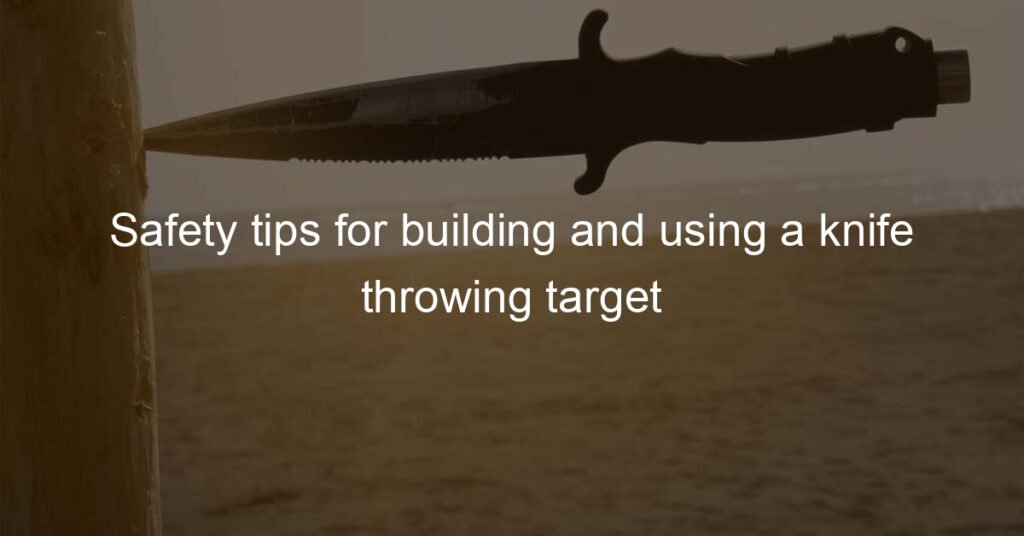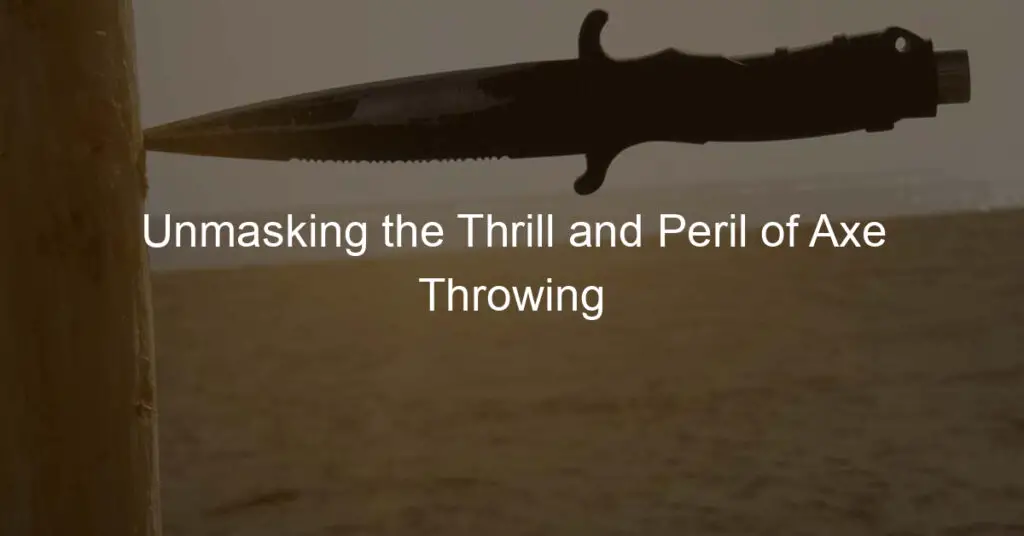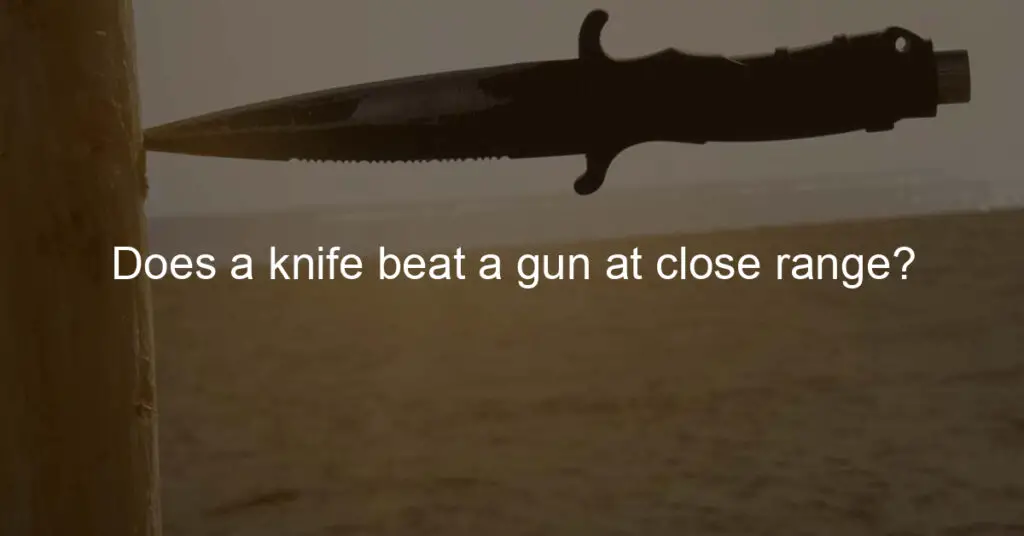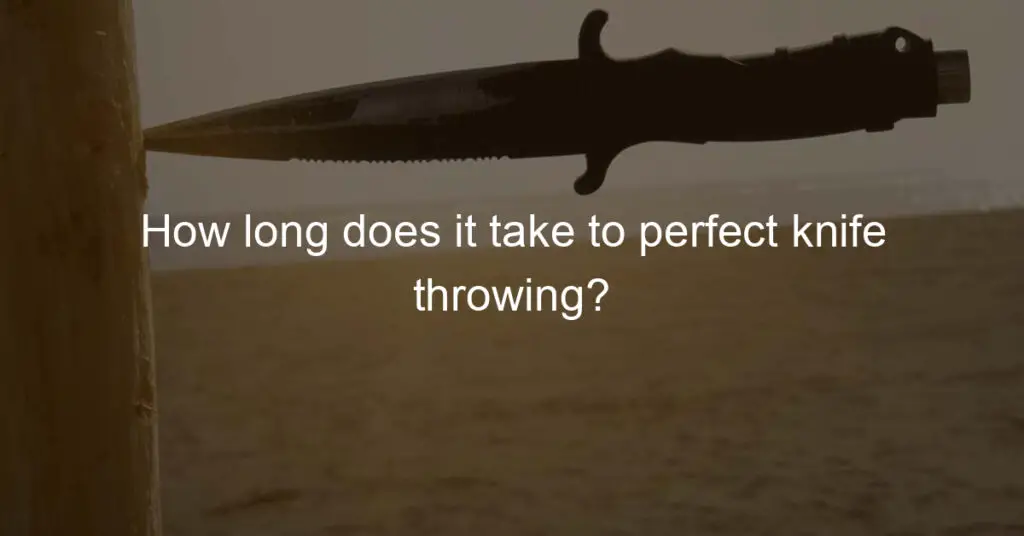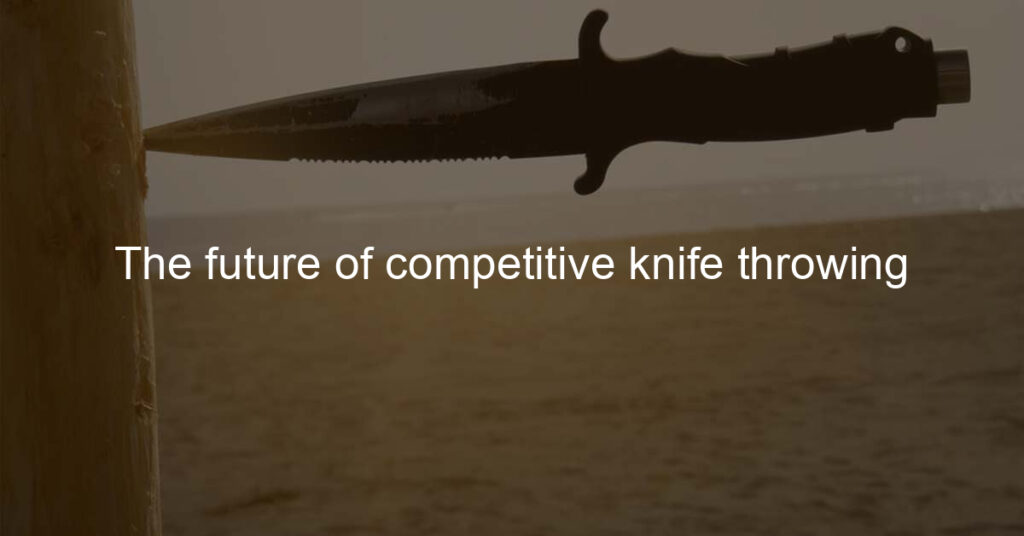Are you tired of throwing your knives at a tree stump or other makeshift knife-throwing target? If so, you’ve come to the right place! Building and using a proper knife-throwing target can not only improve safety but also give you an edge in improving accuracy.
What are the essential safety measures for knife throwing?
When it comes to knife throwing, safety should be your priority. It is important to pay attention to the environment in which you are throwing knives, making sure that there is a safe distance between yourself and anyone else in the area as well as any breakable objects.
Additionally, confirm that the area is free from hazards such as other people or objects close by where a thrown knife could land. Also, it’s important to use appropriately weighted knives for throwing and make sure they are in good condition with no nicks in the blades before using them.
Finally, only throw the knives one at a time, following through after each toss. Taking these steps will help ensure your safety when engaging in this recreational activity.
How to protect bystanders from knife-throwing?
When it comes to knife throwing, safety should always be a top priority. While the thrower needs to take steps to ensure they perform the act in such a way that nobody is harmed, it’s also necessary to think about how we can keep bystanders safe too.
One way is by practicing in an enclosed area like a fence-enclosed backyard, making certain that no accidental throws escape into public areas. Another idea is to mark off distances so that people know where the furthest reach of a knife may be.
Finally, if engaging with any audience members or having bystanders closer than the farthest possible reach of a thrown knife, then require all those who watch and participate to wear appropriate protective gear for their safety. Keeping this information in mind will help everyone involved stay safe when indulging in the sport of knife-throwing.
How to ensure a stable target for knife throwing?
Knife throwing may seem intimidating at first, but with practice and patience, anyone can master this sport. To ensure a stable target for knife throwing, start small by using dull plastic knives to get a sense of accuracy and power behind each throw.
This will help you hone your craft before working up to sharper objects. Once you’re comfortable with the basics, use heavier targets like foam boards or old phone books for added resistance.
Work your way up in size and weight until you feel confident aiming for stationary objects or moving targets, like a spinning wheel or swinging bell. With the steady aim and plenty of practice, your skills will soon be sharp enough to hit any target right on the mark!
Can I use damaged knives for knife throwing?
Knife throwing is a rather unique form of entertainment that can be enjoyed by anyone, but there are certain safety precautions to keep in mind when attempting such a feat. If you’re curious about knife throwing and want to give it a try yourself, the last thing you want to do is use a damaged knife.
A damaged knife can not only ruin your performance, but it also has the potential to cause serious injury if it breaks while spinning through the air. Even if your knife looks fine on the surface, use knives made from any lower-grade materials that may have hidden cracks.
Weakened points could mean putting your safety at risk. In this case, it’s best to purchase knives specifically designed for throwing or invest in high-quality all-purpose blades before giving this exciting hobby a go!
How to avoid injury while knife throwing?
Knife throwing is a popular hobby that comes with a certain level of danger if not done correctly. Following the right safety procedures are essential in avoiding injury while practicing this art form.
Make sure you always throw your knife into something soft, like a piece of foam rubber – no trees or people! Invest in good quality knives with ergonomic handles and stainless steel blades for the best accuracy and safety. Wear safety glasses to protect your eyes from any potential ricochet of the blade.
Also, pick a spot for practice away from people, animals, and anything else that could be damaged by a misfire. Finally, start slow and gradually increase your speed as you get more comfortable with your technique. It’s important to never get complacent as when it comes to throwing knives, you should always play it safe.
What to do in case of an accident during knife throwing?
Knife throwing is a thrilling activity that can entertain guests and make any party exciting, but safety needs to be additional precautions against potential accidents. In the unfortunate event of an accident, you should remain calm and take immediate steps for first aid.
Make sure the injured person is out of danger and move them to a safer place if needed. Seek medical help as quickly as possible for serious cuts and injuries, even if the cut appears to be minor. It’s also important to assess the environment for any secondary hazards that might exist from broken equipment or other objects. Don’t forget to document the incident with photographs or drawings and notify the local authorities so they can review safety measures on site!
Conclusion
In conclusion, safety should always come first when building and using a knife-throwing target. Practice good habits by wearing protective eye gear and taking steps to mark off the boundaries of your safe area. Be mindful of your footing and take clear steps to be aware of bystanders while you are honing your craft. Knife-throwing targets can be a lot of fun, but it is important to remember that safety should never be compromised when engaging in any kind of target practice.

